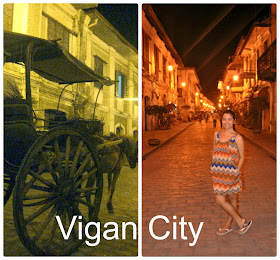A Mang Inasal in Calle Crisologo doesn't seem to fit right in. That was my first impression as I was strolling along this famous cobblestone street in Vigan during my visit last January. Don't get me wrong, I devour Mang Inasal's tasty chicken often too, but I would have wanted this modern fast food chain to have stepped back a bit from this site, or at least should have followed the existing old and vintage architectural theme rather than taking a pervasive modern look. In its stead, I would have wanted a local shop selling burnay jars or other native products in that spot.
A UNESCO Heritage Site, Calle Crisologo is among my favorite spots in the country, but I'm a bit concerned seeing how this old-charm city seemed to have caught up with the modern time.
The thing I have with visiting Vigan is that each time we meet, something new is added and something old is lost. As I look at the old photos I took back when I first visited it in high school, I can see how this historic city have changed -- the commercial establishments around and the number of visitors strolling by obviously increased.
While I understand that nothing stands still and that change and development are inevitable, I feel that some of our cultural heritages are at risk of a slow demise, and Vigan, a so-called "living museum," should not succumb to this kind of fate. The key lies in the active pursuit to preservation and conservation.
Vigan is one of the cities that inherited a beautiful heritage by default. In the 18th and 19th centuries, Vigan or Ciudad Fernandina de Vigan is said to be the third most important city after Manila and Cebu. The sights we see there today -- the museums, cathedrals, plazas, and the food that are depicting Hispanic influences -- are the treasures left of the bygone days of Spanish colonial power in the north.
Although Vigan changed through time, I still feel that it's one of the places in the country that has retained much of its history and a place definitely worth visiting! I've noted here some of the places I recommend while in Vigan and other parts of Ilocos Sur.




